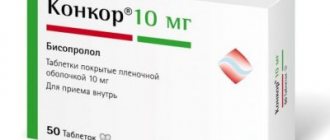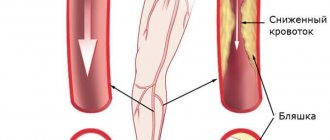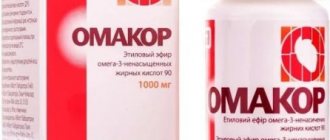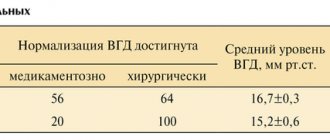The drug Trental, which improves blood circulation, is produced in the form of tablets and a concentrated solution for infusion. The cost of the medicine depends on the form of the medicine and packaging. You can buy Trental at a price of 100-300 rubles per package.
The active substance in pentoxifylline is a xanatine derivative. The component is contained in the following quantities:
- 100 mg, 400 mg in soluble film-coated tablets.
- 20 mg in one ml solution for infusion.
In order to exclude possible allergic reactions when taking the product, it is necessary to pay attention to the auxiliary components that were used to create the drug. Trental instructions also contain all recommendations for use and focus on contraindications.
Composition and release form
Trental® Enteric film-coated tablets - 1 tablet. pentoxifylline - 100 mg excipients: lactose; starch; talc; colloidal silicon dioxide; magnesium stearate shell: methacrylic acid copolymer; sodium hydroxide; macrogol (polyethylene glycol) 8000, talc; titanium dioxide (E171) in a blister 10 pcs; There are 6 blisters in a cardboard pack. Concentrate for the preparation of solution for infusion - 1 ml pentoxifylline - 20 mg excipients: sodium chloride; water for injection in ampoules of 5 ml; There are 5 ampoules in a cardboard pack. Trental® 400 Extended-release film-coated tablets - 1 tablet. pentoxifylline - 400 mg excipients: povidone (PVP); hyaetellose (hydroxyethylcellulose); talc; magnesium stearate shell composition: hypromellose (hydroxypropyl methylcellulose); benzyl alcohol; titanium dioxide; talc; macrogol (polyethylene glycol) 6000; 10 pcs in blister; There are 2 blisters in a cardboard pack.
pharmachologic effect
Trental is a drug with a blood-thinning effect, which is used to improve blood circulation in atherosclerosis and diabetes mellitus
Pharmacokinetics
Tablets 100, 400 mg After oral administration, pentoxifylline is quickly and almost completely absorbed. After almost complete absorption, pentoxifylline is metabolized. The absolute bioavailability of the original substance is (19±13)%. The main active metabolite 1-(5-hydroxyhexyl)-3,7-dimethylxanthine (metabolite-1) has a plasma concentration that is 2 times higher than the initial concentration of pentoxifylline. T1/2 of pentoxifylline after oral administration is 1.6 hours. Pentoxifylline is completely metabolized, more than 90% is excreted through the kidneys in the form of unconjugated water-soluble metabolites. The elimination of metabolites is delayed in patients with impaired renal function. In patients with impaired liver function, T1/2 of pentoxifylline is prolonged and absolute bioavailability increases.
Solution for infusion Pentoxifylline is extensively metabolized in red blood cells and the liver. Among the most well-known metabolites, metabolite-1 (M-1; hydroxypentoxifylline) is formed due to cleavage, and metabolite-4 (M-IV) and metabolite-5 (MV; carboxypentoxifylline) are formed due to oxidation of the main substance. M-l has the same pharmacological activity as pentoxifylline. More than 90% of the taken dose of pentoxifylline is excreted through the kidneys and 3-4% in the feces. T1/2 of pentoxifylline after intravenous administration of 100 mg was approximately 1.1 hours. In patients with severe liver dysfunction, T1/2 of pentoxifylline increases. Pentoxifylline has a large volume of distribution (168 L after 30 minutes of infusion of 200 mg) and a high clearance of approximately 4500-5100 ml/min. Pentoxifylline and its metabolites do not bind to plasma proteins. In severe renal impairment, the elimination of metabolites is slowed down.
Pharmacodynamics
Trental® improves the rheological properties of blood (fluidity) by affecting the pathologically altered deformability of red blood cells, inhibiting platelet aggregation and reducing high blood viscosity. Trental® improves microcirculation in areas of poor circulation. As an active ingredient, Trental® contains a xanthine derivative - pentoxifylline. The mechanism of its action is associated with the inhibition of phosphodiesterase and the accumulation of cAMP in the cells of vascular smooth muscles and blood cells. Providing a weak myotropic vasodilator effect, pentoxifylline slightly reduces peripheral vascular resistance and slightly dilates the coronary vessels. Treatment with Trental® leads to improvement of symptoms in cases of cerebrovascular accident. The success of treatment for occlusive lesions of the peripheral arteries (for example, intermittent claudication) is manifested in lengthening the walking distance, eliminating night cramps in the calf muscles and the disappearance of pain at rest.
Dosage
The dose and method of administration are determined by the doctor after examining the patient. In this case, the severity of the circulatory disorder against the background of a specific disease and the person’s condition must be taken into account. Treatment must be carried out under strict control of blood pressure.
According to the instructions attached to the drug, oral administration is permitted in accordance with the following recommendations:
- Treatment intake: 3 tablets (100 mg) three times a day.
- Possible increase in dosage to 6 (100 mg) tablets three times a day.
- The maximum single dose is no more than 2 (100 mg) tablets.
Tablets are usually indicated for maintenance therapy. They are taken after meals. They must be swallowed with plenty of clean water. If there are pathologies of the kidneys and liver, then the dosage is reduced by 2 times. There are also other recommendations in the instructions that need to be studied.
The infusion solution is prepared from 100 - 600 mg of medication. It is diluted in 0.9% sodium chloride solution (250 - 500 ml). Droppers are placed 1-2 times a day. It is imperative to test for compatibility when using other infusion solutions.
Drug interactions
For all dosage forms, Pentoxifylline can enhance the effect of drugs that lower blood pressure (ACE inhibitors, nitrates). Pentoxifylline may enhance the effect of drugs that affect the blood coagulation system (indirect and direct anticoagulants, thrombolytics), antibiotics (including cephalosporins). Cimetidine increases the plasma concentration of pentoxifylline (risk of side effects). Co-administration with other xanthines may lead to excessive nervous stimulation. The hypoglycemic effect of insulin or oral antidiabetic agents may be enhanced when taking pentoxifylline (increased risk of hypoglycemia). Strict monitoring of such patients is necessary. In some patients, concomitant use of pentoxifylline and theophylline may result in increased theophylline levels. This may result in more or worse theophylline-related side effects.
Overdose
Tablets 100, 400 mg Symptoms: dizziness, retching, drop in blood pressure, tachycardia, arrhythmia, redness of the skin, loss of consciousness, chills, areflexia, tonic-clonic convulsions. Solution for infusion Symptoms: weakness, sweating, nausea, cyanosis, dizziness, decreased blood pressure, tachycardia, fainting, drowsiness or agitation, arrhythmia, hyperthermia, areflexia, loss of consciousness, tonic-clonic convulsions, signs of gastrointestinal bleeding (caffeine-type vomiting grounds). Treatment: symptomatic, special attention should be paid to maintaining blood pressure and respiratory function. Convulsive seizures are relieved by the administration of diazepam. When the first signs of overdose appear (excessive sweating, nausea, cyanosis), immediately stop taking the drug. Provides a lower position for the head and upper body. Monitor the free patency of the airways.
Trental tablets p/o enteric soluble 100 mg No. 15x4
Name
Trental tab coated c/r square volume 100 mg in blister. in pack No. 15x4
Description
Round, biconvex, white film-coated tablets.
Main active ingredient
Pentoxifylline
Release form
Pills.
Dosage
100mg
Pharmacodynamics
Pentoxifylline improves blood flow, reducing increased blood viscosity, and also has additional pharmacological properties: improves the ability to deform erythrocytes by inhibiting phosphodiesterase with a subsequent increase in intracellular cAMP and ATP, as well as inhibiting erythrocyte aggregation; inhibits platelet aggregation; reduces pathologically elevated levels of fibrinogen in blood plasma; inhibits the activation of leukocytes and the adhesion of leukocytes to the vascular endothelium. There are no studies examining the effect of pentoxifylline on cardiac or cerebrovascular morbidity and/or mortality. There are no studies examining the effect of pentoxifylline on cardiac or cerebrovascular morbidity and/or mortality.
Pharmacokinetics
After oral administration, pentoxifylline is rapidly and almost completely absorbed. Since the drug is primarily metabolized during its first passage through the liver, the bioavailability of the unchanged drug ranges from 25-45%. Peak plasma concentrations are reached after 1 hour. Pentoxifylline is almost completely metabolized in the liver, producing up to 7 metabolites, some of which are active. The active main metabolite 1-(5-hydroxyhexyl)-3,7-dimethylxanthine (metabolite I) is determined in the blood plasma in concentrations twice as high as the parent substance, with which it is in reversible biochemical equilibrium. Therefore, pentoxifylline and metabolite I are considered the active unit. Pentoxifylline is eliminated in two stages; the initial half-life of the parent substance is 0.4-0.8 hours, the half-life of the metabolite is 1.0-1.6 hours. The final half-life of pentoxifylline from blood plasma is about 1.6 hours. Pentoxifylline does not bind to plasma proteins. Elimination is mainly - more than 90% - through the kidneys in the form of water-soluble unconjugated polar metabolites; only 4% is excreted in the feces. Pentoxifylline in unchanged form is excreted in trace amounts. The duration of elimination of metabolites in patients with impaired renal function is increased. In patients with impaired liver function, the half-life is increased and the absolute bioavailability is increased (see sections “Dosage and Administration”, “Precautions”). Pentoxifylline and its metabolites pass from the mother's body into breast milk. In elderly patients, the elimination rate is slower than in younger patients.
Indications for use
Chronic occlusive peripheral arterial disease - Fontaine stage IIb - intermittent claudication, in cases where other measures such as therapeutic walking, angioplasty and/or restorative procedures are not possible or indicated. Impaired function of the inner ear caused by poor circulation (including hearing loss, sudden hearing loss). Additional symptomatic treatment of pathological cognitive impairment in elderly patients (except for Alzheimer's disease and other types of dementia).
Directions for use and doses
The dosage is set by the doctor in accordance with the individual characteristics of the patient. The initial dose is: one Trental® 100 tablet three times a day, followed by increasing the dose to 200 mg or 400 mg 2-3 times a day. The maximum single dose is 400 mg. The maximum daily dose (orally + parenterally) should not exceed 1200 mg. When switching to a daily dose of 1200 mg per day, the use of Trental® 400 mg tablets is recommended (see instructions for use of Trental® 400 mg tablets). For patients with low or unstable blood pressure, special dosing instructions may be required - dose reduction. For patients with impaired renal function (creatinine clearance less than 30 ml/min), the dose should be reduced to 50-70% of the standard dose, depending on individual tolerance. The dose should not exceed 800 mg (8 tablets) per day. In case of severe renal failure, the dosage should be reduced and adjusted depending on individual tolerability of the drug. For patients with severe liver dysfunction, a dose reduction is required; the decision is made by the doctor on a case-by-case basis, based on the severity of the disease and the patient’s tolerability of the drug. Children and adolescents Due to the lack of sufficient clinical experience, Trental® 100 should not be prescribed to children. Elderly patients There are no special dosage requirements. However, given that in elderly patients the elimination rate is slower than in younger people, the decision is made by the doctor on a case-by-case basis, based on the severity of the disease and the patient's tolerability of the drug. Method and duration of administration The tablets should be swallowed whole (without chewing), with plenty of liquid during or immediately after meals. The duration of treatment is determined by the doctor in accordance with the individual clinical condition of the patient. Skipping a dose If you forget to take Trental® 100, take it as soon as you remember. Do not take a double dose to make up for a missed tablet. Note: With accelerated passage through the gastrointestinal tract (laxatives, diarrhea, surgical reduction in the length of the intestine), in some cases excretion of tablet residues may be observed. If early elimination is observed only occasionally, you should not pay attention to this process.
Use during pregnancy and lactation
Pregnancy There is not enough experience regarding the use of the drug during pregnancy. Therefore, it is recommended not to use Trental® 100 during pregnancy. Lactation Pentoxifylline passes into breast milk in small quantities. Since there is insufficient experience with the use of Trental® 100 in nursing women, the physician should carefully weigh the possible risks and benefits before prescribing the drug.
Precautionary measures
At the first signs of hypersensitivity reactions, you should stop taking the drug and take appropriate measures. Pentoxifylline should be used with caution in patients with: Diabetes: due to an increased risk of bleeding. Severe diseases of the coronary or cerebral arteries: due to an increased risk of low blood pressure. Systemic lupus erythematosus (SLE) and mixed connective tissue diseases: Pentoxifylline should be used only after a careful benefit-risk assessment. Particularly careful medical supervision is required for patients: with cardiac arrhythmias at risk of worsening arrhythmias with a history of acute myocardial infarction with severe ischemic heart disease and significant stenosis of blood vessels with impaired renal function: In patients with impaired renal function (creatinine clearance less than 30 ml/min) it is necessary adjust the dose (risk of accumulation and increased risk of side effects, see section "Dosage and Administration") with severe liver dysfunction: For patients with severe liver dysfunction, a dose reduction is required, which is determined by the doctor individually, based on the severity of the disease and tolerability of the drug (see section “Method of administration and dosage”) with an increased risk of bleeding, including as a result of joint use of anticoagulants (vitamin K antagonists), antiplatelet agents and/or if the patient has disorders in the blood coagulation system. Clinical and laboratory monitoring of hemostasis is necessary due to the high risk of bleeding and/or a decrease in prothrombin time (see section “Contraindications”). Patients who have recently undergone surgery must carefully and often monitor blood coagulation parameters (INR) with low and unstable blood pressure the dose should be reduced (see section "Dosage and Administration") while taking pentoxifylline and one of the following drugs (see section "Interaction with other drugs"): oral antidiabetic drugs or insulin; ciprofloxacin; platelet aggregation inhibitors; theophylline. Pentoxifylline may enhance the effect of antihypertensive drugs. Treatment should be carried out under blood pressure control. Due to the risk of aplastic anemia during therapy with pentoxifylline, regular monitoring of blood counts should be performed. Pediatric Population The safety and effectiveness of pentoxifylline in children have not been sufficiently studied. Therefore, the use of pentoxifylline in children is not recommended (see Contraindications section). Elderly Patients: Elderly patients may require dose reduction (increased bioavailability and decreased elimination rate). Smoking may reduce the therapeutic effectiveness of the drug. The drug contains lactose and should not be used in patients with rare hereditary diseases such as galactose intolerance, Lapp lactase deficiency or glucose-galactose malabsorption.
Interaction with other drugs
Combinations that require precautions during use: Antihypertensive drugs Pentoxifylline may enhance the effect of antihypertensive drugs or drugs that have a possible hypotensive effect: the decrease in blood pressure may be enhanced. Anticoagulants Pentoxifylline may enhance the effect of anticoagulants. In patients with an increased tendency to bleed, due to concomitant use of anticoagulant drugs, any bleeding that occurs may be increased. Cases of increased anticoagulation effects have also been reported in patients taking pentoxifylline and vitamin K antagonists (coumarins) concomitantly. Therefore, close monitoring of the anticoagulant effect in such patients (eg, regular checks of prothrombin time and INR) is recommended, especially when initiating pentoxifylline therapy or when changing the dose. Platelet aggregation inhibitors Due to the increased risk of bleeding, caution should be exercised when taking a platelet aggregation inhibitor simultaneously (such as clopidogrel, epifibatide, tirofiban, epoprostenol, iloprost, abxisimab, anagrelide, non-steroidal anti-inflammatory drugs, except selective COX-2 inhibitors, acetylsalicylates
acetylsalicylic acid/lysine acetylsalicylate
, ticlopidine, dipyridamole) with pentoxifylline. Oral antidiabetic agents, insulin Pentoxifylline may enhance the effect of lowering blood sugar levels, causing hypoglycemic reactions. Glycemic control should be tailored to the individual case. Theophylline It is possible to increase the level of theophylline in the blood, therefore, during the treatment of respiratory diseases, the adverse effects of theophylline may increase. Increased risk of theophylline overdose. If clinical symptoms appear, it is necessary to adjust the dose of theophylline during and after treatment with pentoxifylline. Cimetidine Increased plasma levels of pentoxifylline and active metabolite I are possible, as well as increased effects of pentoxifylline. Ciprofloxacin When taken concomitantly with ciprofloxacin, the concentration of pentoxifylline in the blood serum may increase in some patients. Therefore, there may be an increase in frequency and intensification of adverse reactions associated with concomitant use.
Contraindications
Trental® 100 should not be used in patients with: hypersensitivity to pentoxifylline, other methylxanthines or to any of the excipients included in the drug; peptic ulcer of the stomach and/or intestines; hemorrhagic diathesis; massive bleeding; hemorrhages in the retina of the eye; cerebral hemorrhages; suffered acute myocardial infarction; severe cardiac arrhythmias are also contraindicated: children (up to 18 years); pregnancy, lactation period.
Compound
One tablet contains: active ingredient: pentoxifylline – 100 mg; excipients: lactose, corn starch, talc, colloidal anhydrous silicon dioxide, magnesium stearate; shell: methacrylic acid copolymer, sodium hydroxide, macrogol (polyethylene glycol) 8000, talc, titanium dioxide (E171).
Overdose
Symptoms Dizziness, nausea, low blood pressure, tachycardia, hot flashes, loss of consciousness, fever, agitation, absence of reflexes, tonic-clonic seizures, coffee-ground vomiting and arrhythmia. Treatment When the first signs of overdose appear (sweating, nausea, cyanosis), immediately stop taking the drug. It is necessary to urgently consult a doctor. Provides a lower position for the head and upper body. Monitor the free patency of the airways. If little time has passed after the overdose, gastric lavage and the use of activated charcoal are recommended. Since a specific antidote is unknown, treatment is symptomatic under the control of the cardiovascular system. Observation in the intensive care unit may be required to avoid complications.
Side effect
The following adverse reactions were reported during clinical trials and post-marketing surveillance. The following categories are used to indicate the frequency of adverse events: Very often (? 1/10) Often (from ? 1/100 to
Storage conditions
Store in a dry place at a temperature not exceeding 25° C. Keep out of the reach of children.








